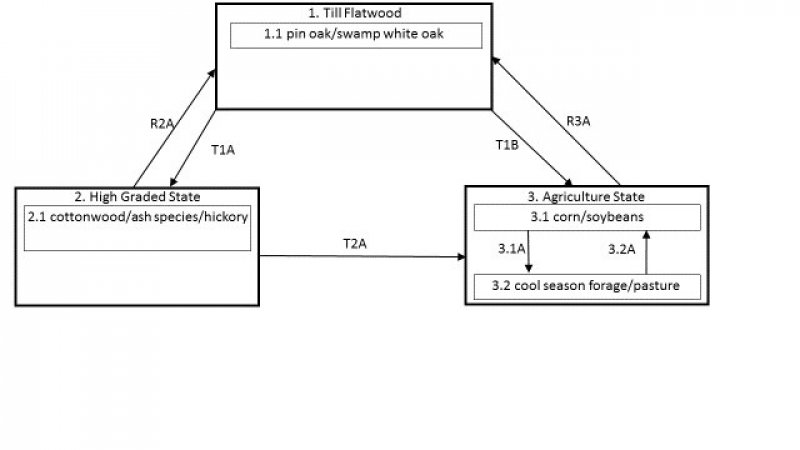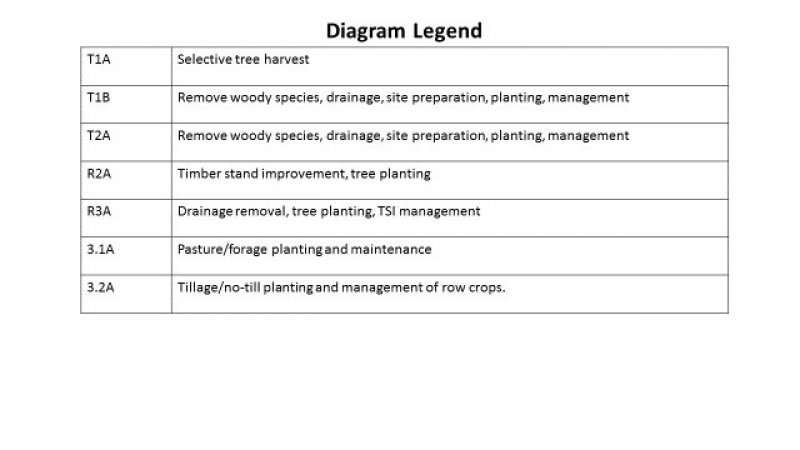
Natural Resources
Conservation Service
Ecological site F111XB501IN
Till Depression
Last updated: 9/11/2024
Accessed: 12/20/2025
General information
Provisional. A provisional ecological site description has undergone quality control and quality assurance review. It contains a working state and transition model and enough information to identify the ecological site.
MLRA notes
Major Land Resource Area (MLRA): 111X–Indiana and Ohio Till Plain
111B – Indiana and Ohio Till Plain, Northeastern Part. This area is in the Eastern Lake and Till Plains Sections of the Central Lowland Province of the Interior Plains. The entire MLRA is glaciated, and most areas are dominated by ground moraines that are broken in places by lake plains, outwash plains, flood plains, and many recessional moraines. The ground moraines and lake plains in front of the recessional moraines are flat to undulating. In many places stream valleys occur at the leading edge of the recessional moraines. Narrow, shallow valleys commonly are along the major rivers and streams in this MLRA, and some areas along the major rivers and streams have deposits of sand. Elevation ranges from 630 to 1,550 feet (190 to 470 meters), increasing gradually from west to east. Relief is mainly a few meters, but in some areas hills rise as much as 100 feet (30 meters) above the adjoining plains.
The extent of the major Hydrologic Unit Areas (identified by four-digit numbers) that make up this MLRA is as follows: Western Lake Erie (0410), 41 percent; Wabash (0512), 28 percent; Scioto (0, 28 percent; Scioto (0506), 10 percent; St. Clair-Detroit (0409), 9 percent; Great Miami (0508), 6 percent; Southeastern Lake Michigan (0405), 5 percent; and Southwestern Lake Huron (0408), 1 percent. The Huron River in Michigan, Cedar Creek in Indiana, and the Sandusky River in Ohio have been designated as National Wild and Scenic Rivers in this MLRA.
The surficial materials in this area include glacial deposits of till, outwash, and lacustrine sediments from Wisconsin and older glacial periods. A thin mantle of loess occurs in some areas. Most of the MLRA is underlain by Silurian and Devonian limestone and dolostone. Middle Devonian to Early Mississippian black shale and Early to Middle Mississippian siltstone and shale are in some areas of the northern part of the MLRA.
Ecological site concept
This site is an upland site formed on glacial till parent materials. It is located on concave landscape positions in the depressions (toeslopes and footslopes) of glacial till plains and moraines. Soils have loamy surface textures with a mucky modifier, are very poorly to poorly drained, exhibit up to frequent ponding that can last more than 30 days.
The characteristic vegetation of the site is that of a flatwoods type dominated by pin oak and swamp white oak, with cottonwood, green ash, and silver maple being common in the canopy as well. The large, seasonal fluctuation of water on the site allows for the co-existence of upland and lowland trees. Inundation of the site generally occurs in the spring which leads to a sparse and patchy understory. Fire did occur on the site, but high intensity fires were rare. Low intensity surface fires were more common on sites that are adjacent to more fire prone sites such as prairies and savannas. Ponding in the spring followed by summer drought along with windthrow were the most dominant disturbance factors. A large portion of this site has been drained and is in agricultural production. The majority of the converted acres is used for small grain rotations, specifically corn and soybeans. A much smaller amount of the site is also used for growing forage that is used for pasture or hay production. These sites are predominately cool season grass species and legumes such as tall fescue and clover species.
Associated sites
| F111XB502IN |
Wet Till Ridge Wet Till Ridge. On a convex landscape position and somewhat poorly drained (SWPD). |
|---|---|
| F111XE503IN |
Till Ridge Till Ridge. On a convex landscape position and moderately well to well drained. |
Similar sites
| F111XB203IN |
Wet Alluvium Forest Wet Alluvium Forest. |
|---|---|
| F111XB101IN |
Lacustrine Flatwood Lacustrine Forest. |
Table 1. Dominant plant species
| Tree |
(1) Quercus palustris |
|---|---|
| Shrub |
Not specified |
| Herbaceous |
Not specified |
Click on box and path labels to scroll to the respective text.



